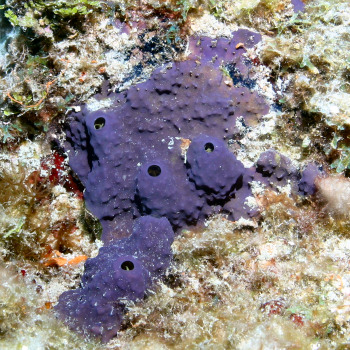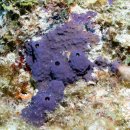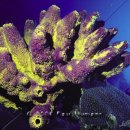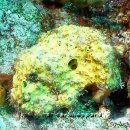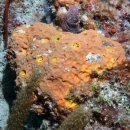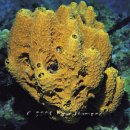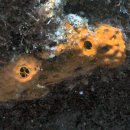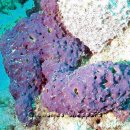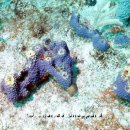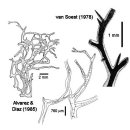| Common names: |
Branching tube sponge, bleeding cake sponge |
| Growth form: |
Massive to lobate with projecting tubes. |
| Surface: |
Rounded conules or irregular shallow depressions with a usually smooth surface between. |
| Color: |
Highly variable, including purple, greenish, red-brown, orange or bright yellow. Usually bicolored. Internally bright lemon yellow. |
| Consistency: |
Rubbery, cheese-like, hard when dry. |
| Oscules: |
On top of lobes or tubes; scattered on surface of massive forms; 3-15 mm wide. |
| Exudate: |
Dark exudate when squeezed. Turns bluish after exposed to air for an hour. |
| Skeletal components (Spicules, fibers): |
No spicules. Spongin fibers only. Thick (0.5–1 mm) dark amber fibers with a granular pith, which may be partly stratified. Many fibers with knotty and irregular protuberances. |
| Skeletal architecture: |
No distinct exterior skeleton; conules formed by several converging fibers that form a knot, from which very short, truncated ends branch out, forming a crown. Interior skeleton is an irregular branching (dendritic) aggregation of knotty fibers. Very irregular meshes occur when fibers interconnect. |
| Ecology: |
A common reef species. The varied morphology (massive/amorphous, or massive with lobes or tubes), combined with two surface appearances (conulose or shallow rounded depressions) and multiple colors and combinations may make field identification difficult (and the common names useless). |
| Distribution: |
South Florida and throughout the Caribbean Sea, with a wide depth range (4-24 m). |
| References(s): |
van Soest (1978), Zea (1987), Hooper & van Soest (2002). |
|
|
| Similar species: |
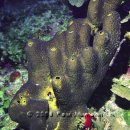
Smenospongia conulosa |
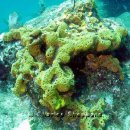
Verongula rigida |
|
